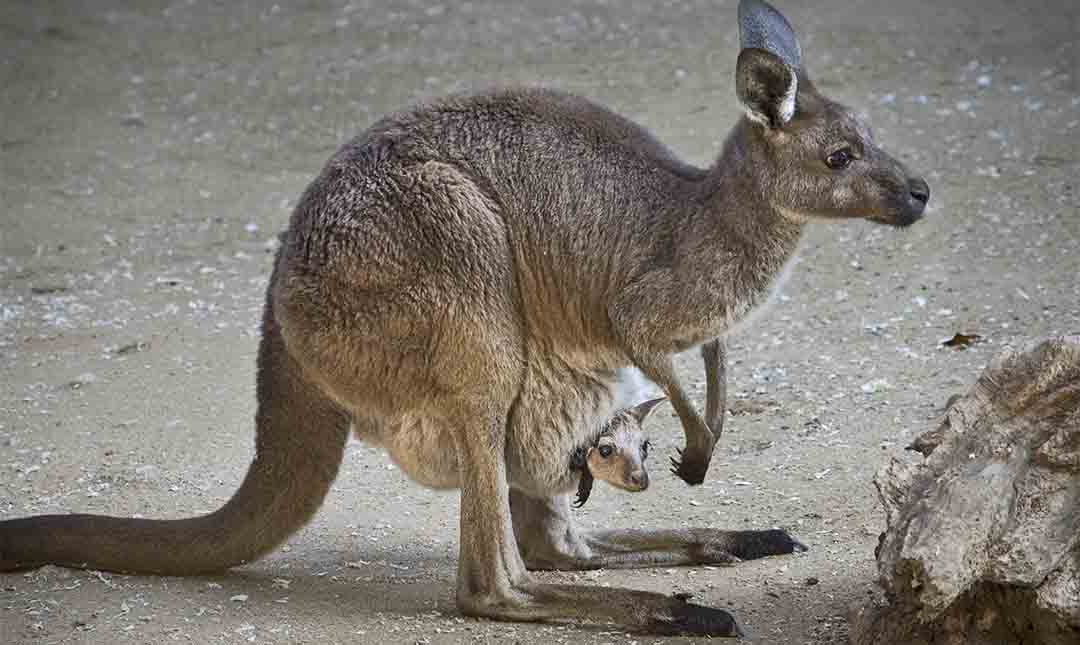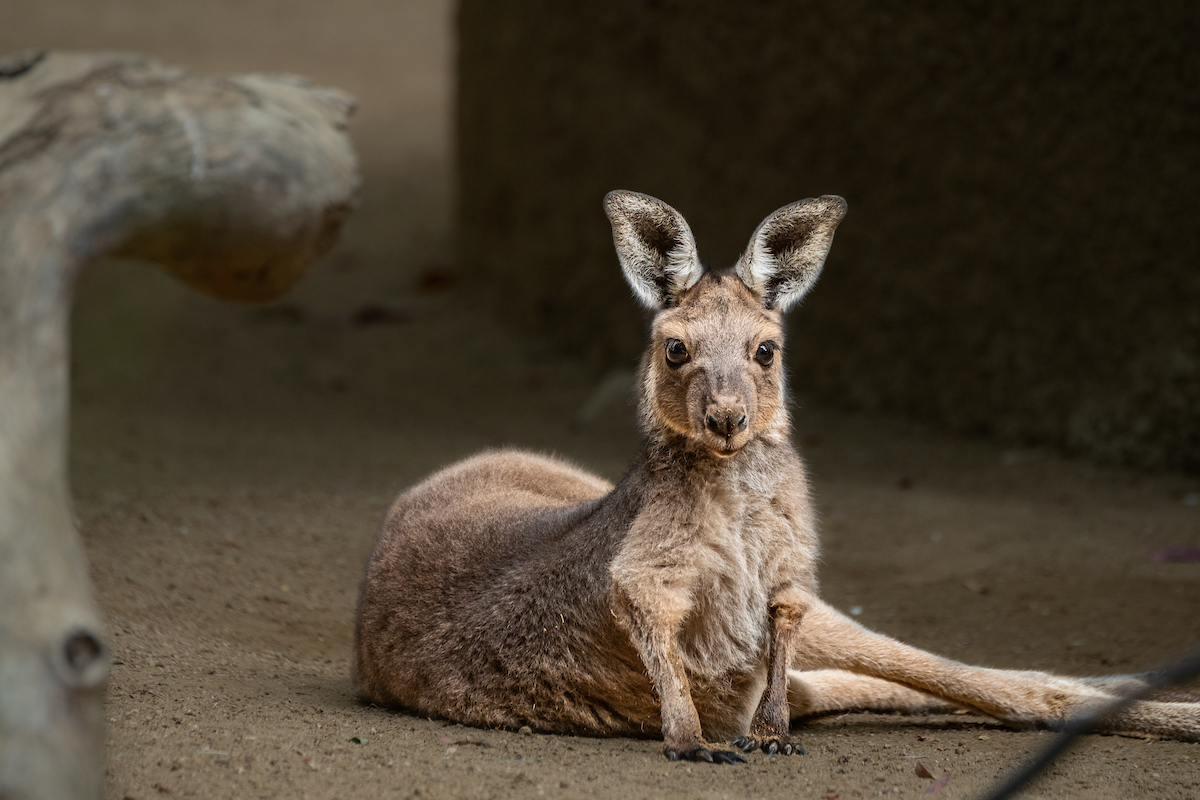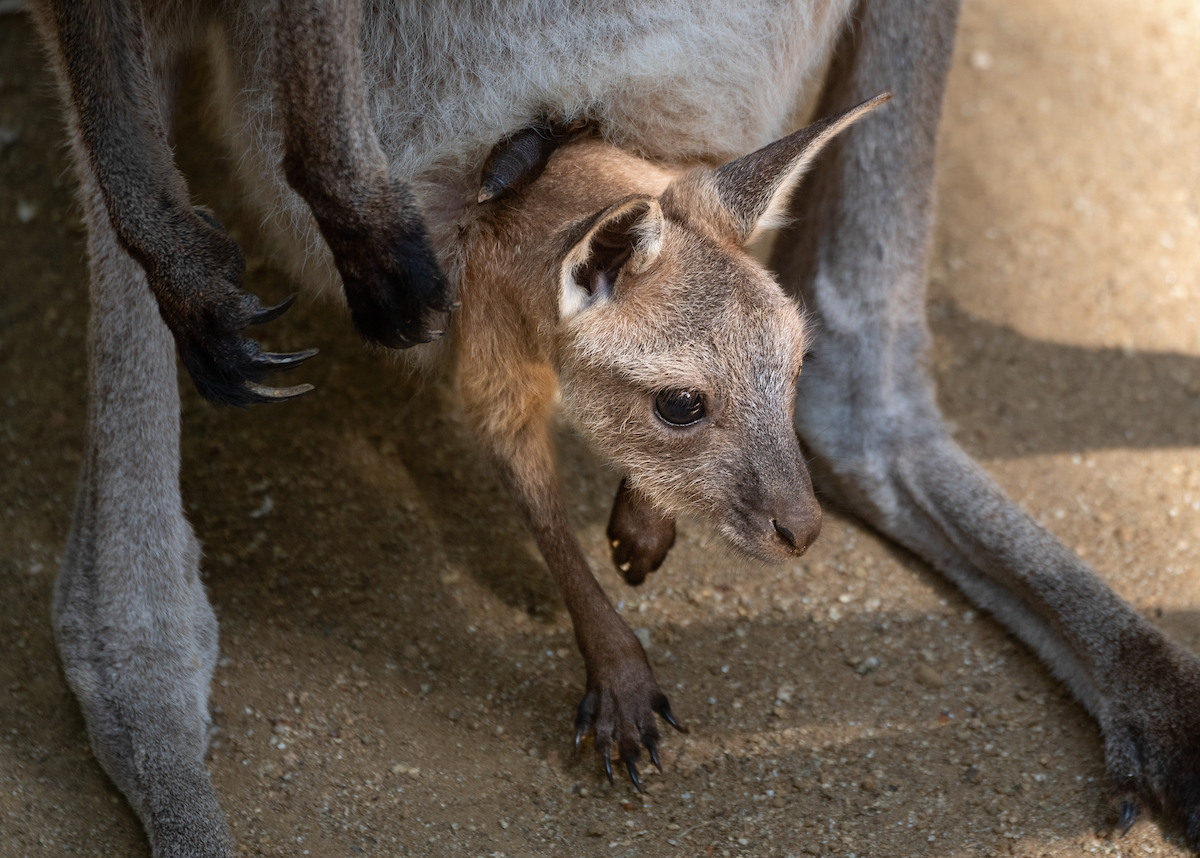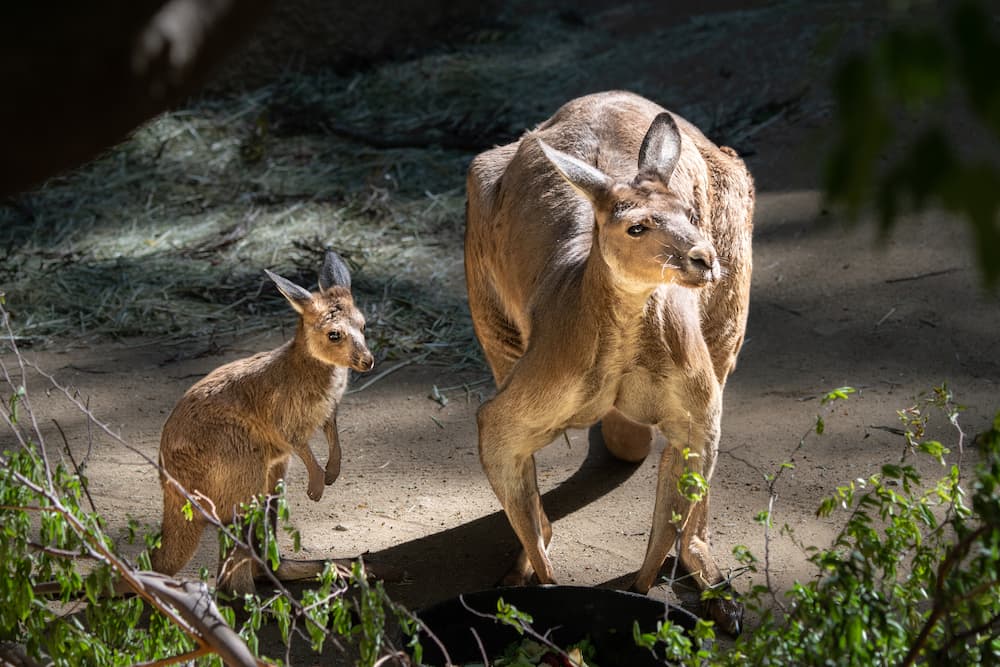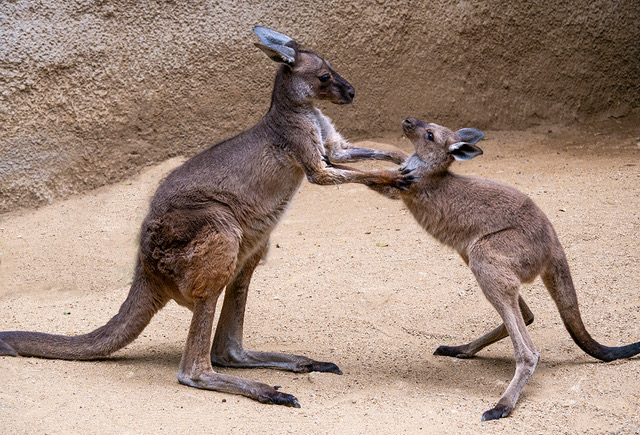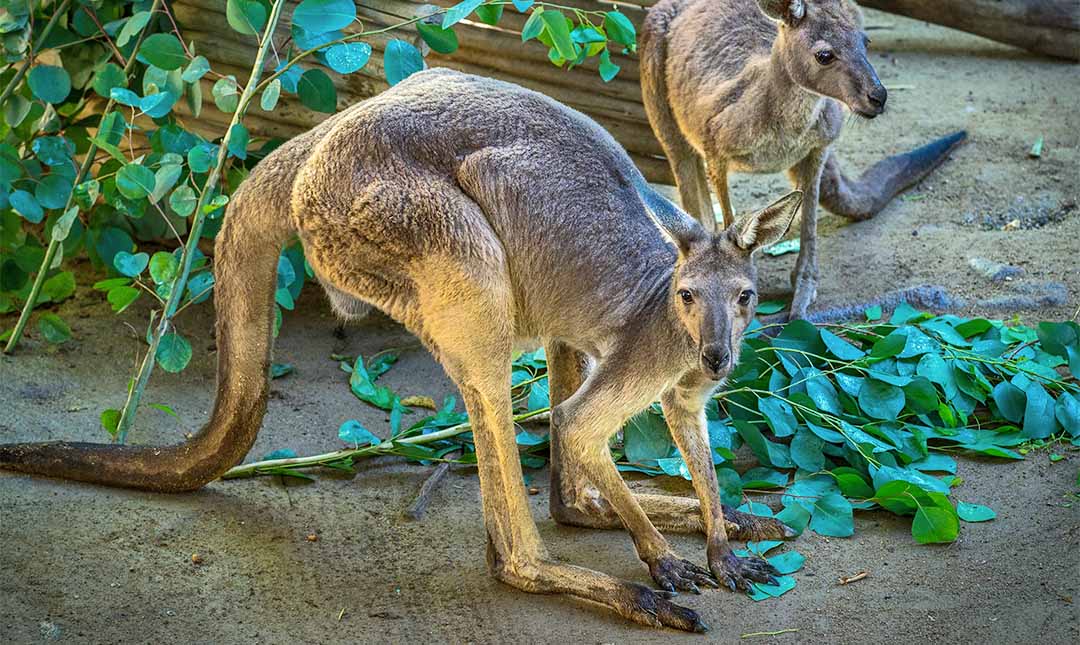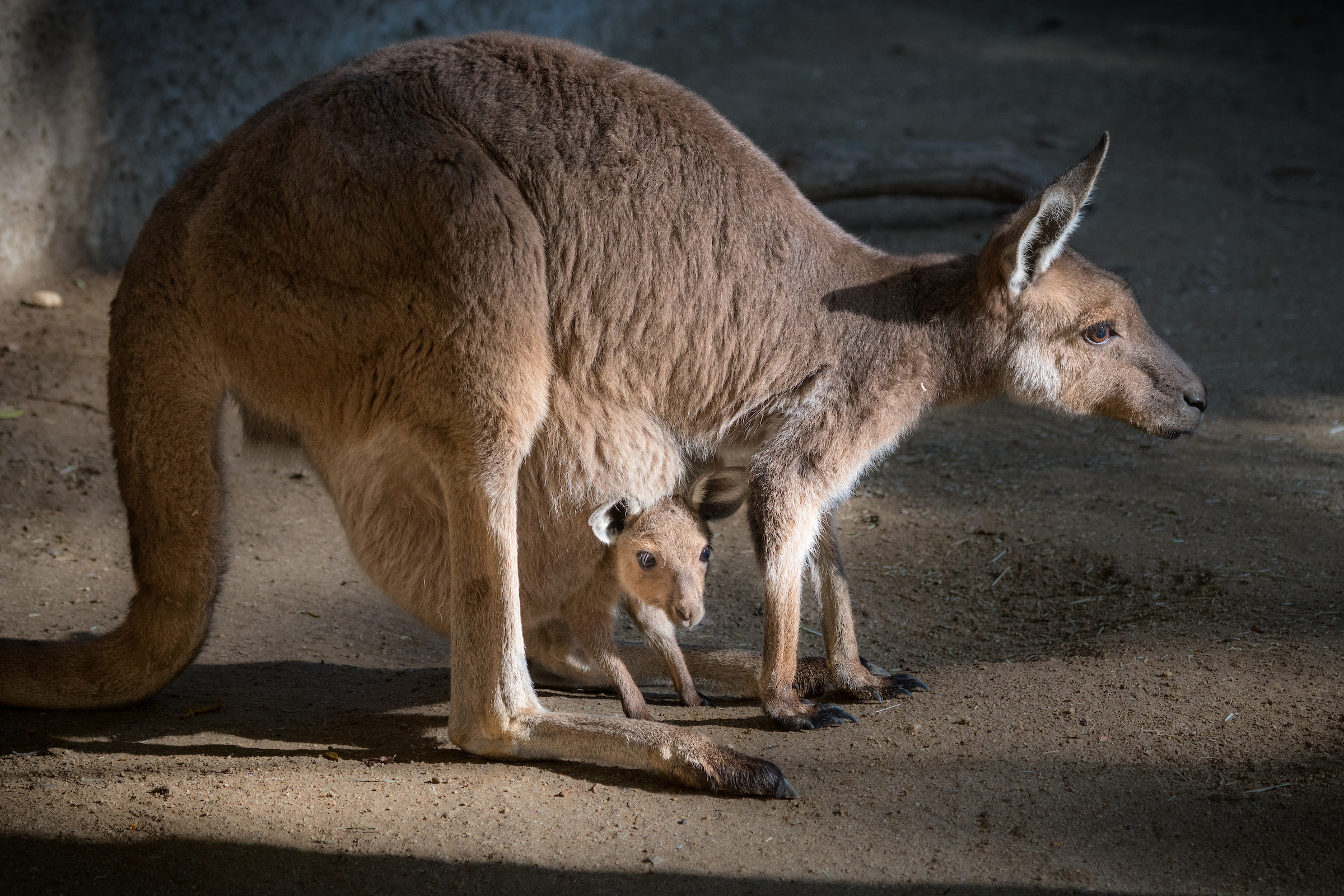About
Western gray kangaroos gather in groups called mobs that number as many as 50 individuals. During the day they rest in the shade and at night they graze on grass and shrubs until dawn. Their fibrous diet is tough on their teeth, but as their molars wear down, new ones grow in to replace them. Kangaroos hop an average distance of 3 to 6 feet, but at full speed, large kangaroos can bound more than 25 feet at a time, using their tails like a springboard. They can reach speeds of more than 30 mph for short periods and can jump as high as five feet.
Male kangaroos, known as bucks or boomers, compete for the right to mate and will spar with one another using their arms or lean back on their tails and kick with their feet. After only 30 days gestation, the female (known as a doe) gives birth to an embryonic joey, less than one inch long. The mother licks a path to her pouch and the infant claws its way there. Once inside, it will suckle on one of four teats for roughly 8.5 months, after which the joey starts to leave the pouch for short periods. At 10.5 months, the juveniles stay outside the pouch though they will continue to nurse. The does produce two types of milk, one for newborns and a second for mature joeys. The young are independent at 14–20 months, and females mate as soon as the joeys leave the pouch.

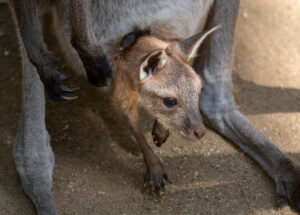
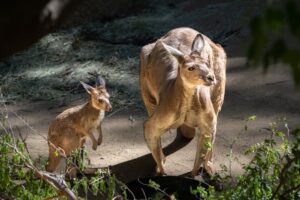

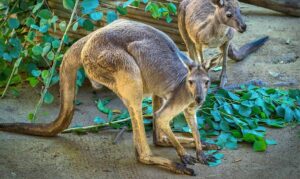

Habitat
Grassy woodlands and scrubland of southern Australia.
Diet
Herbivorous, grazing primarily on grasses, leafy shrubs, and low trees.
Physical Characteristics
Body length is around 3 to 4.5 feet. Weight ranges from 33 to 120 pounds. Males can be twice the size of females. Lifespan in the wild averages 10 to 12 years. In human care, lifespan averages 15 to 20 years.
LOCATION WITHIN THE ZOO
You’ll find this animal in the Australia section. See Zoo Map.

